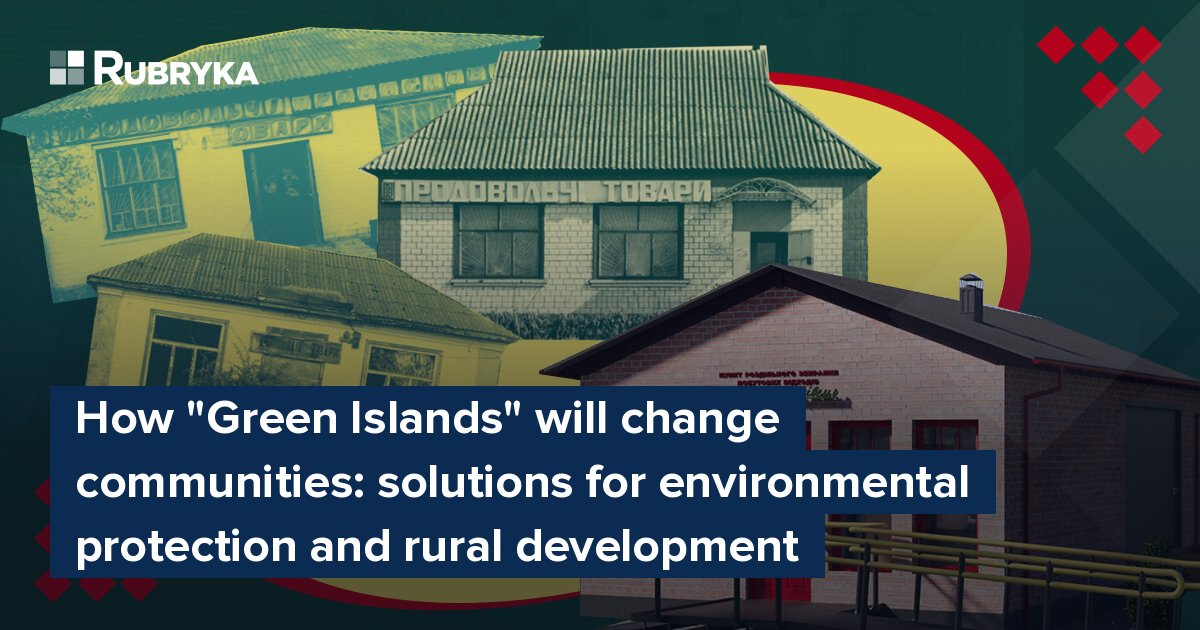
What is the problem?
Neglected public buildings can be found in almost every Ukrainian village. These are often one-story small houses, which even in Soviet times housed shops, post offices, or village councils. Once upon a time, life was bustling near such buildings — almost all local residents came here on business and just to hang out. But over time, the farms and "offices" moved to more modern and comfortable premises, while the old buildings began to fall into disrepair, and their yards were overgrown with weeds.
What is the solution?
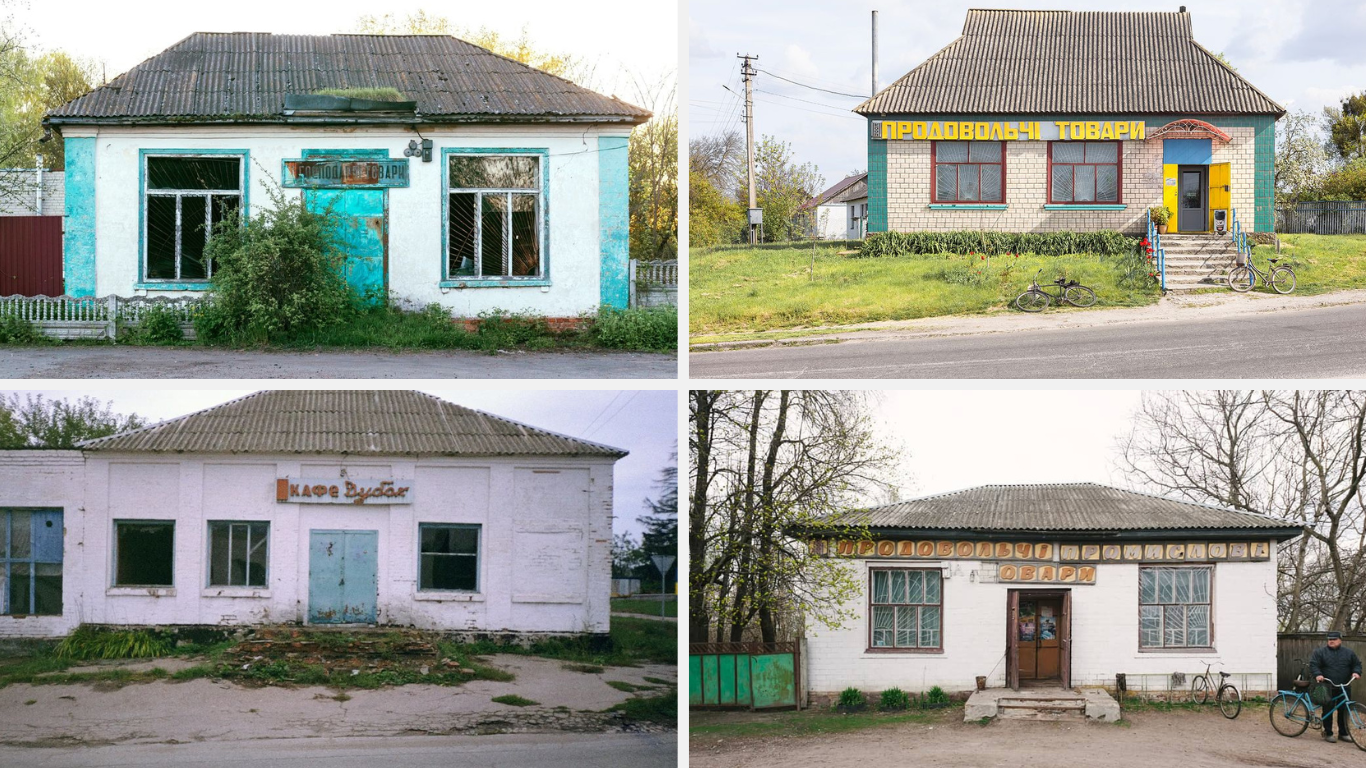
Typical village shops. Photo: "Silmahiia" project by photographer Ihor Metod
Colorful rural buildings are an important part of 20th-century Ukrainian architecture and should not be allowed to disappear, says the NGO Ekoltava. They have decided to give these old buildings a second life. With support from the USAID "HOVERLA" Project, eco-activists have created a 3D design for a typical "green island"—a facility for the separate collection of household waste—using the space of abandoned village shops.
How will it work?
Ekoltava is an independent group of experts and environmental activists, founded in 2013. Initially focused on organizing clean-up events and eco-festivals, the organization has spent the past several years helping Ukrainian communities adopt ecological solutions and shift toward nature-oriented practices.
"When Ukraine's waste management reform launched in 2022, we wanted to make a strong impact through training, strategic planning, and education to help communities put it into practice," says Yuliia Melnyk, director of Ekoltava.
That same year, Ekoltava won a competition, and in 2023, began implementing the project "Supporting the Implementation of the Waste Management System at the Local Level," which led to the creation of the "Green Island" concept.
What is a "Green Island"?
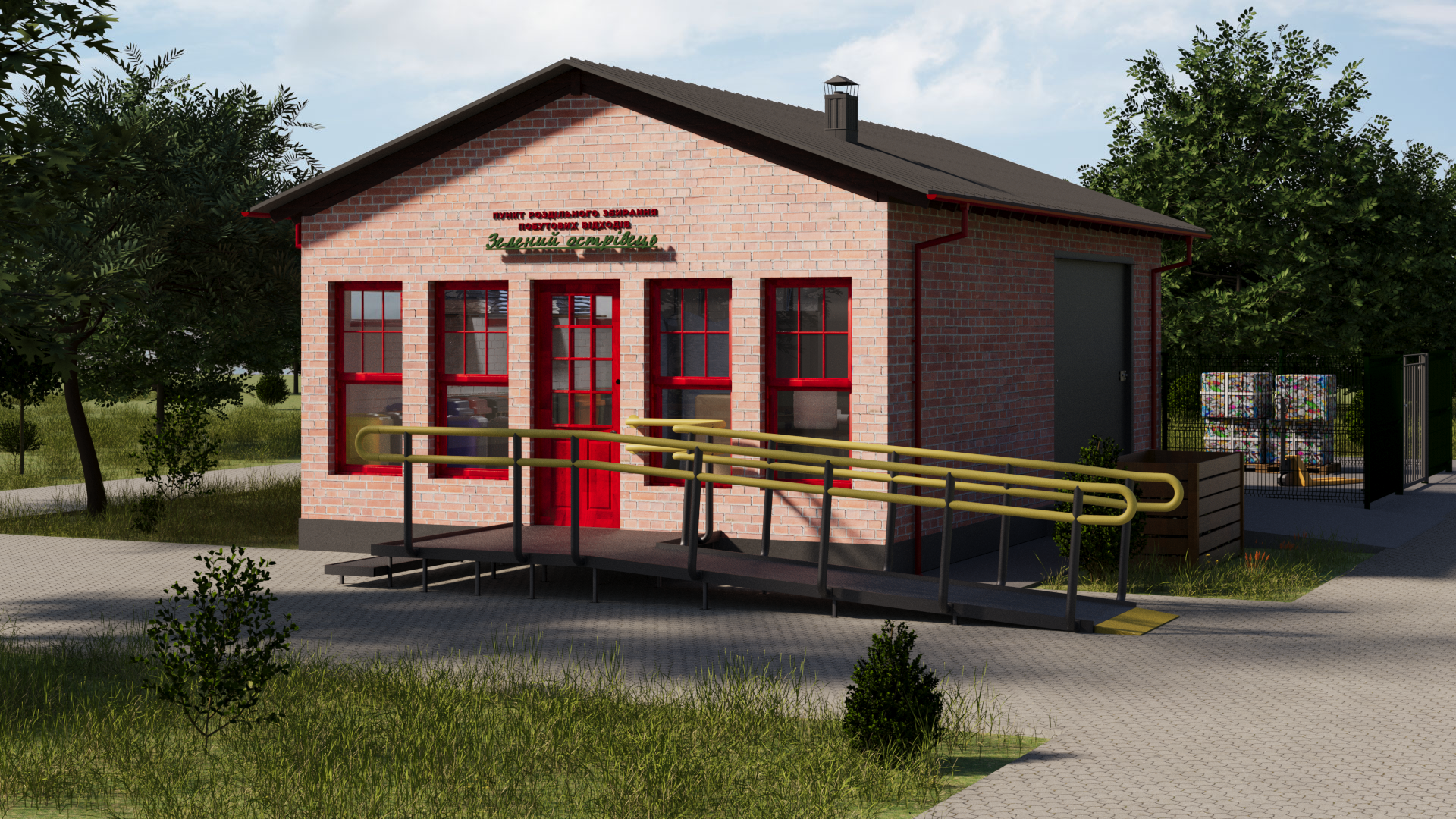
3D layout of a point for separate collection of household waste on the basis of a village store.
According to Ekoltava's plan, a "Green Island" will serve as a collection point for around 20 types of household waste, aimed at processing and disposal. These stations are designed to collect materials that ordinary entrepreneurs or containers near homes don't handle. Ekoltava highlights that such waste-sorting points will soon be mandatory for every community. They also want "Green Islands" to maintain their role as public spaces, ensuring that residents perceive them in a positive and welcoming way.
"These buildings must continue to serve their communities while adhering to the principles of sustainable development," says Ekoltava's team.
Therefore, rather than building new structures, the project focuses on revitalizing existing ones. These transformed buildings will become socially beneficial eco-islands where residents can engage in meaningful, responsible activities or simply meet up.
"As we help communities develop waste management systems, we aim for 'Green Island' to become an integral part of this system, accessible to all, including people with limited mobility," adds Melnyk.
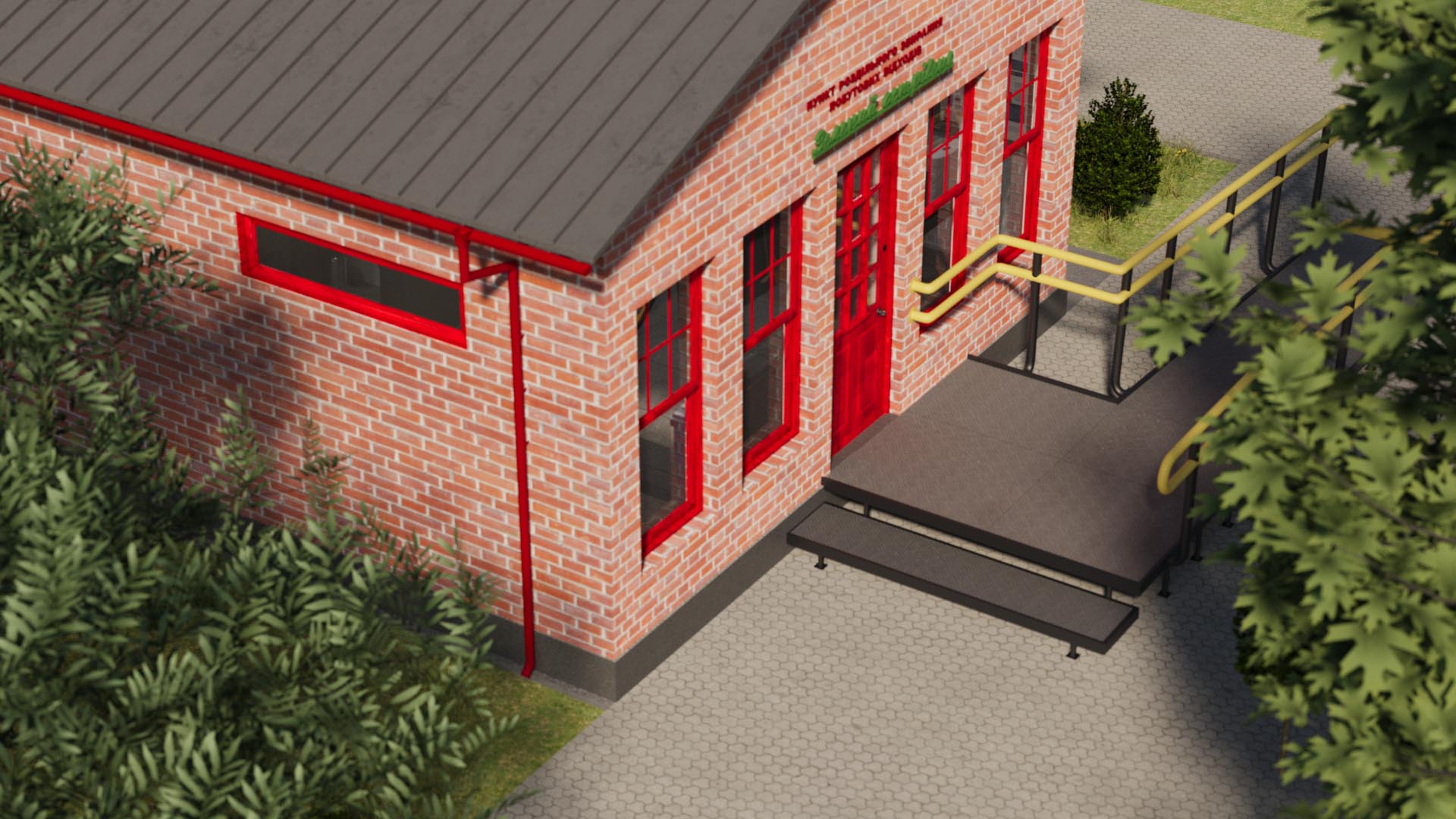
Ramp at the entrance to "Green Island".
The design of the future "Green Island" is presented through 3D visualizations.
Buildings that could be transformed into a Green Island, particularly village houses, share certain common features. These include a direct entrance from the street, an additional service entrance, an approximate area of 50 square meters, and surrounding space that can be used for logistics or, for example, summer playgrounds.
"We frequently encountered village houses with unlined pink brick exteriors and white-painted interiors. We want to embrace this aesthetic as a standard," say the designers of Ekoltava. "The color of the windows and doors can be customized—our design includes red, but yellow or orange would also work well."
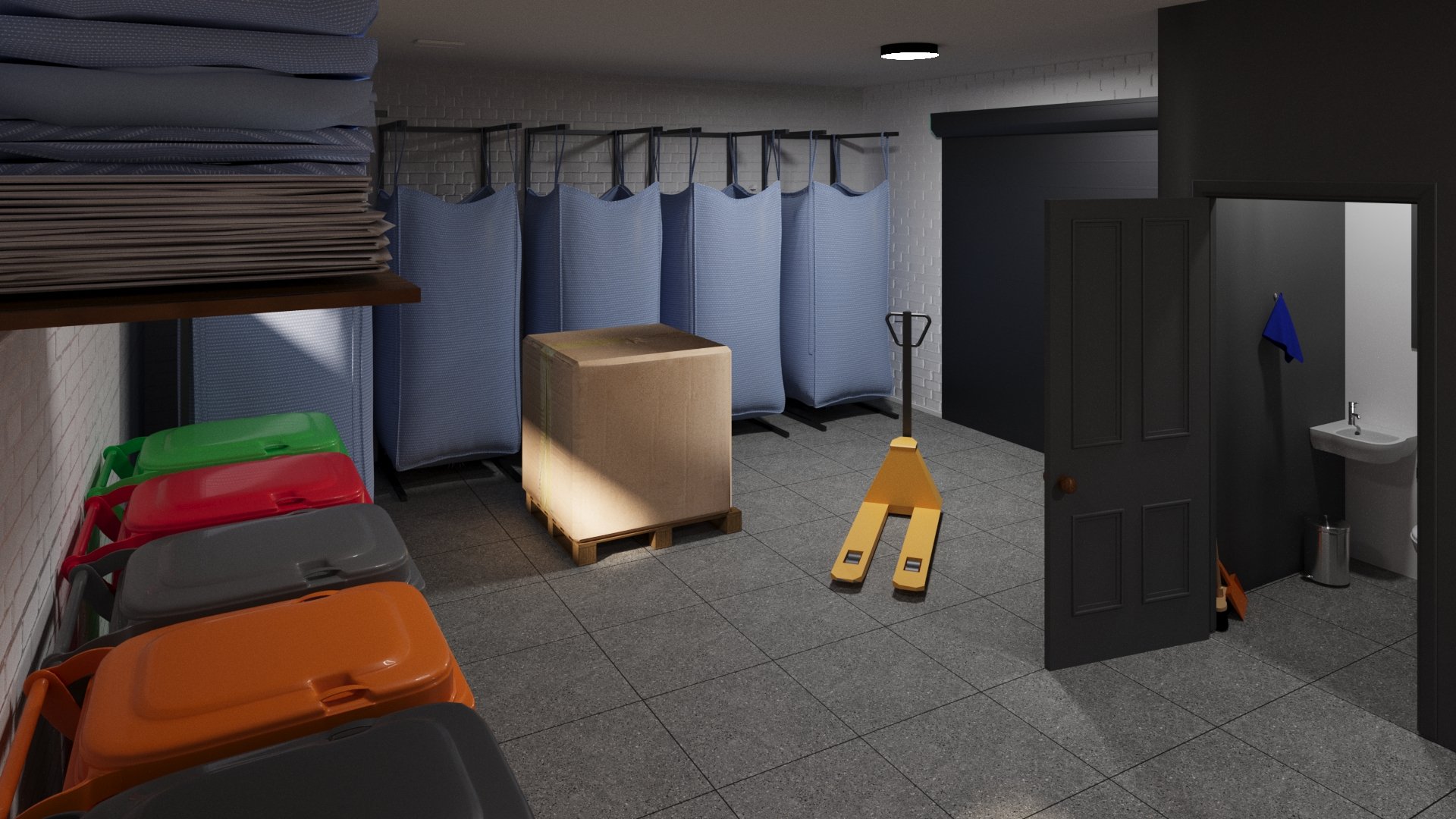
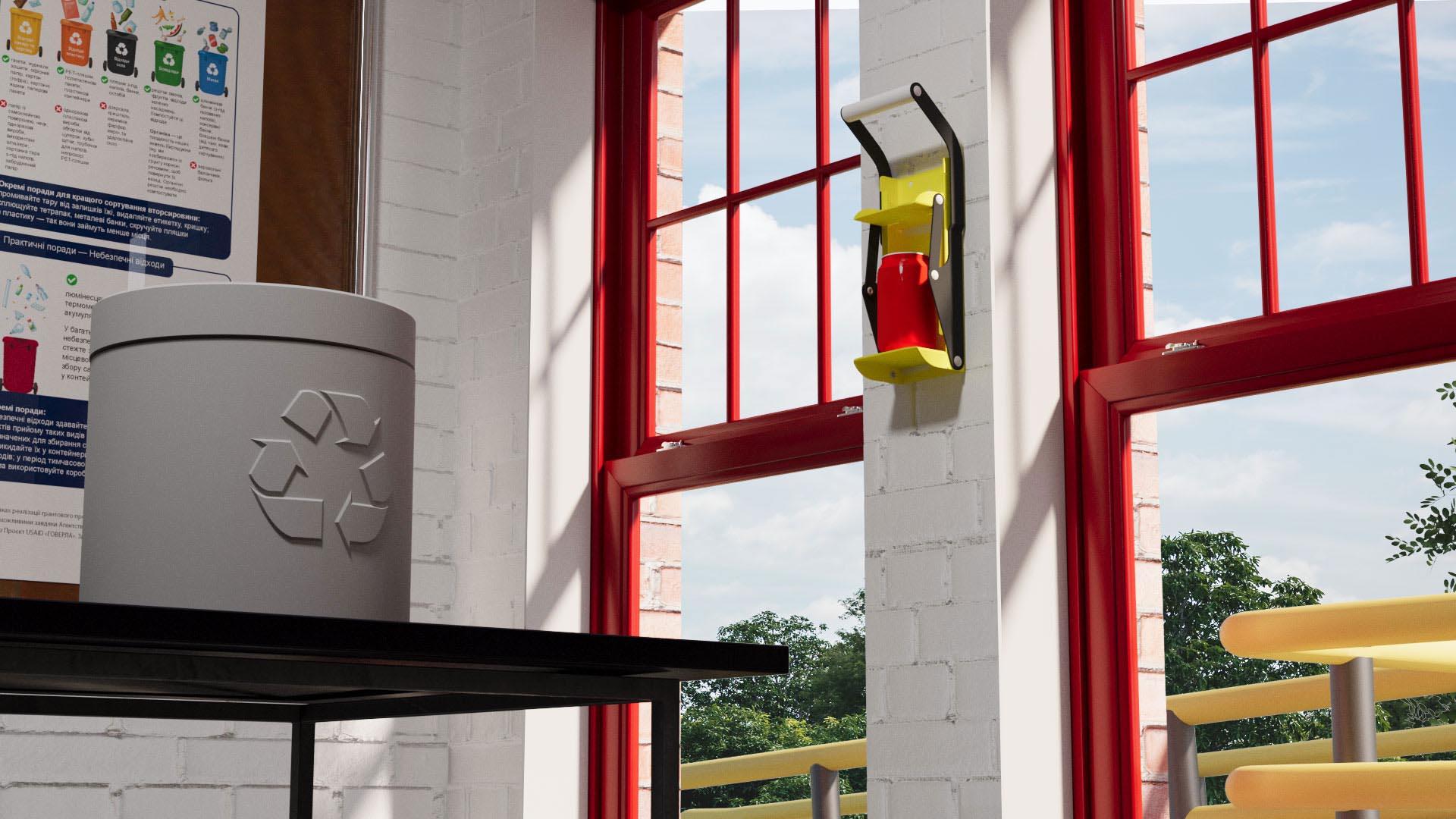
Interior of the "Green Island."
Inside the building, the developers of the 3D model have included designated containers for glass, paper, plastic, metal, hazardous waste, household appliances, and furniture, all necessary for the operation of the separate collection point. A separate space is reserved for a bathroom. The design also features an information corner for residents and a manual press mounted on the wall for compressing PET bottles and aluminum cans. According to the project's authors, this feature could be a fun activity for children, but if the budget allows, a more professional press for recycling could be installed.
"Ukraine already has examples of mobile press systems," says designer Roman Gezha. "Instead of purchasing an expensive stationary press for each community, a mobile one can be used. Although our design doesn't include a stationary press, it can be added as an option. However, it requires special technical conditions: increasing the area from 50 to 100 square meters, raising the ceiling height, and providing a forklift at the facility."
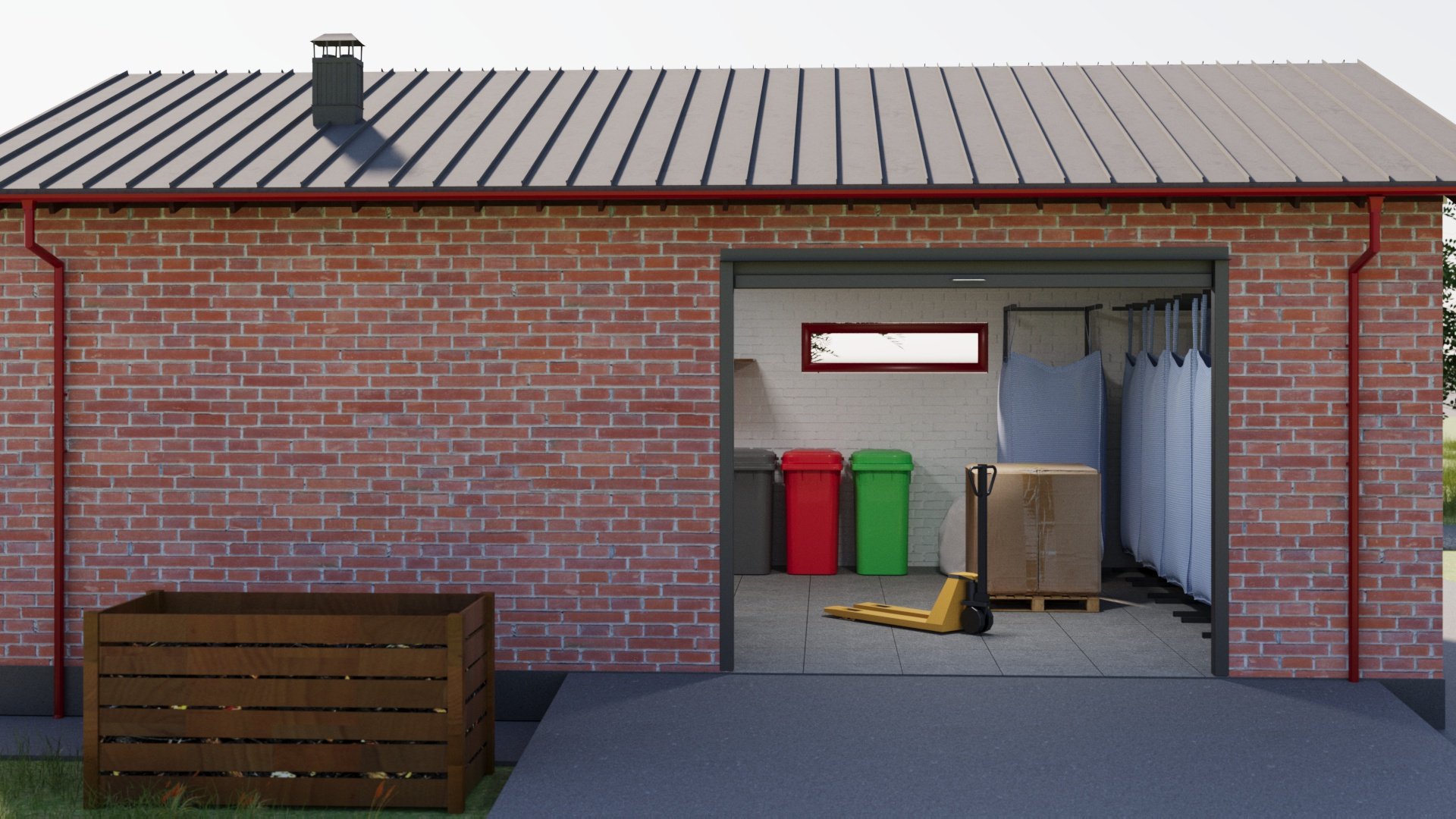
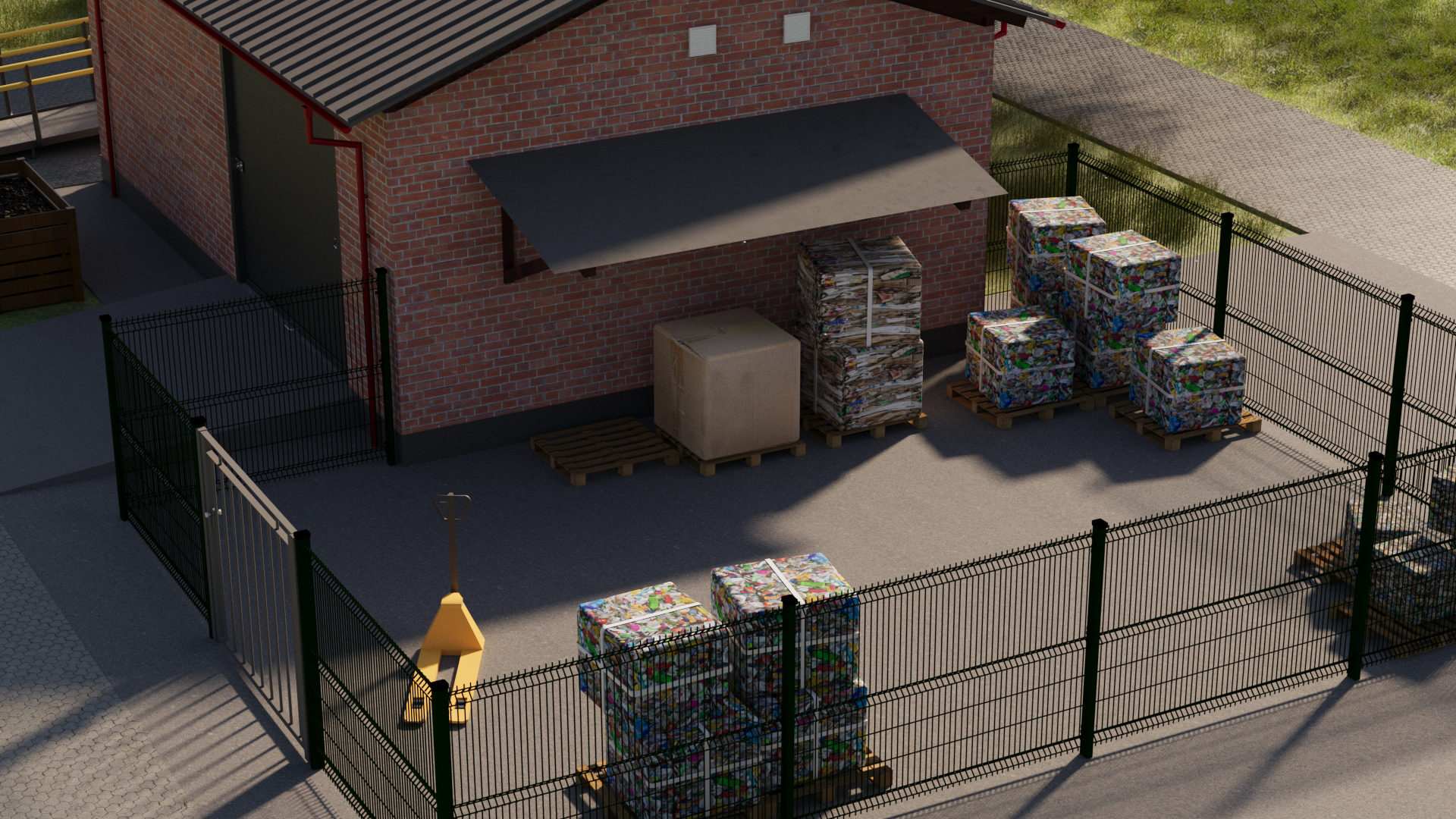
The look of the "Green island" on the outside.
In the backyard of the facility, there is a fenced area with a rain canopy for storing collected or already compressed plastic, cans, and cardboard until they are picked up for recycling.
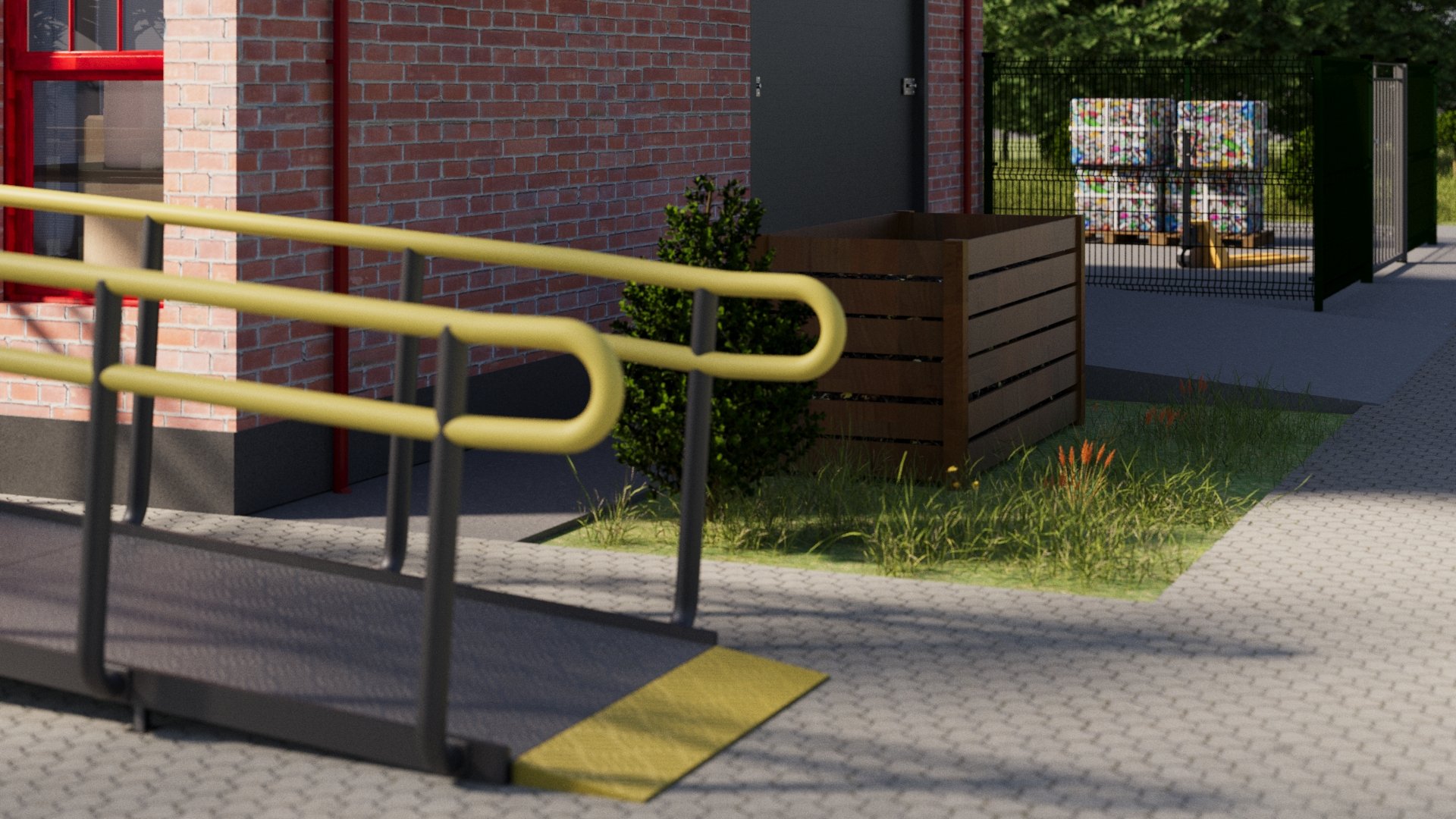
Instead of a short lawn, there are meadow grasses.
It's impossible to envision an eco-island without a green zone surrounding the building, and Ekoltava made this a priority while working on the project.
"A short lawn, often seen in cities as the 'neatest' option, isn't the right solution," the organization explains. "Instead, you can plant meadow plants. They do a much better job of absorbing dust and harmful substances, lowering air temperatures, and providing pollinating insects with nutritious pollen and nectar. Plus, imagine how much more pleasant it is to be surrounded by fragrant herbs, fresh air, and birdsong than dry stubble. Outdoor furniture will add to the comfort."
Will it definitely work?
"The Green Island is ready for implementation—we've developed the design project and the technical instructions for setting it up. Now, interested communities can use this project, allocate funding, and choose a location to bring it to life. Of course, partnerships with waste operators and logistics need to be established, and the legislation in this sector is still being fine-tuned," says Gezha.
According to the project's authors, the "Green Island" has the potential to become much more than just an "innovative garbage dump," as some might call a separate household waste collection point. It can also be a place where people gather, learn new skills, and spend their free time.
"The Green Island is not a garbage dump. In the common understanding, a dump is a place with piles of unsorted waste—often bio-waste like decomposing food scraps or dirty plastic and glass containers. The word 'trash' carries negative connotations of filth and stench. We want the term 'Green Island,' or its official name—a separate household waste collection point—not to be associated with that image. A Green Island should foster the habit of waste sorting and, more importantly, help people realize that waste isn't something to be discarded but a valuable resource that can be transformed into countless new products," emphasizes Gezha.
Ekoltava highlights that this space can also be used for:
- Lectures on waste sorting. For example, many people in Ukraine still don't realize that a plastic bottle can become raw material for the textile industry. It can be crushed, turned into fibers, and transformed into a new dress or pants. "This isn't garbage. The oceans are overflowing with waste, so we need to view plastic, glass, and aluminum containers as resources from which something new can be made," says Gezha. He also reminds that Ukrainians have long been familiar with recycling, such as collecting paper for reuse. The same mindset should be applied to all types of waste.
- Educational programs in schools. Local schools can get involved in the project to visually demonstrate eco-friendly living to students. "Education and creating eco-awareness are our main focus. Over the years, Ekoltava has held more than a hundred lectures for schools and universities. First, we need to implement the 'Green Island' concept, but if there's consensus with communities to develop educational projects and the resources to do so, we're all for it," says Oksana Bondar, project manager at Ekoltava.
Whether people will embrace the "Green Island" and commit to sorting waste depends on their understanding of its importance. Ekoltava has been trying to raise awareness about this for years, and it's a long-term effort.
"Going to the Green Island should become as routine and necessary as going to the bank. The desire to stay and engage here is a secondary outcome, tied to the development of the 'island,'" says Roman Gezha.
He adds, "Let's not forget that establishing separate waste collection points falls under the responsibilities of village, town, and city councils according to Articles 26 and 35 of the Law of Ukraine 'On Waste Management.' While it isn't yet mandatory, if we want to advance waste management, 'Green Islands' are part of our future and our path to European integration."
Are there any limitations to the project?
According to the director of Ekoltava, the main current limitations are resources and legislation. Until Ukraine's waste management system is fully operational, it's too early to declare complete success for the project. True success will come when "Green Islands" are established on a large scale and functioning in communities. To achieve this, a solid legal framework and sufficient resources are necessary. Only then can the system be considered fully operational.
"Resources mean funding. Ekoltava doesn't have the means to fund the construction of such facilities on its own. Other parties will need to step in—such as companies fulfilling their social responsibility to the communities they work in, helping set up these green 'islands,'" says Melnyk.
In addition to resources, communities need both interest and determination. Legislation will eventually mandate, not just recommend, the creation of waste sorting points, as was the case with the 2023 Ordinance, and develop detailed plans.
"If we want the country to avoid drowning in waste and instead move forward, local waste management plans should become standard practice," says Bondar. "Local waste sorting points are an essential part of the community's waste management system, and it's only a matter of time. The design project for Green Island is a pilot initiative aimed at staying ahead of the curve—something that will soon become a necessity."
Bondar adds that some communities in Ukraine have already shown interest after seeing the design. They are actively searching for resources and suitable premises, while Ekoltava is working on building partnerships with donors and businesses to support these efforts.
Even more useful solutions!
In addition to the "Green Island," Ekoltava has developed and launched Ukraine's first School of Municipal Waste Management as part of the project "Supporting the Implementation of the Waste Management System at the Local Level." This 3-month training course, created by Ukrainian waste management experts, includes a series of lectures and practical classes where specialists cover topics such as legislation, tariff formation, community engagement, and landfill management.
Ekoltava also assists communities in developing Local Waste Management Plans and Road Maps—essentially checklists to help each community address its waste challenges and progress in this area.
"It's important to understand that resolving the waste problem requires a comprehensive approach. There is no quick fix. Communities need to create plans, authorities need education, and we must establish 'Green Islands' and promote waste sorting. But even more critical is building infrastructure for waste sorting and recycling. This should be a priority for authorities at all levels. As time passes, those living near landfills suffer serious health issues, lack access to clean drinking water, and often cannot even sell their homes. If we don't prioritize the environment today, no one else will. Change doesn't happen overnight, so we must seize every opportunity to improve Ukraine's ecological situation, especially in light of the ongoing challenges we face. Recently, we were contacted by military personnel wanting to set up a sorting corner in their unit. This makes us very happy, as it indicates that people and society are evolving. Sorting is becoming a part of daily life. We need to recognize these changes and support them," concluded Yulia Melnyk, director of Ekoltava.


